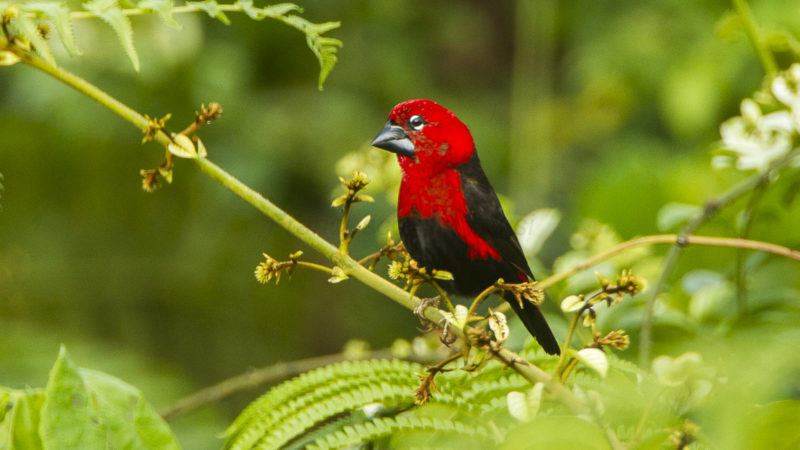Region:
Africa (Cameroon)
The black-bellied seedcracker (Pyrenestes ostrinus) is unusual among birds in exhibiting a non-sex-related polymorphism in bill size and represents one of the few examples of disruptive selection in natural populations. Research on this species focuses on understanding the ecological and evolutionary mechanisms maintaining trophic polymorphisms in birds. This work has included measuring natural selection in natural populations, examining the genetic basis of traits through breeding experiments, and investigating ecological aspects of diet, feeding behavior and competition. Despite increasing evidence of the widespread occurrence of resource polymorphisms in vertebrates, little is known about their genetic basis.
Understanding the genetic basis of a polymorphism when the ecological basis is well understood, as in seedcrackers, has the potential of lending important insights into the evolution of discrete variation and the genetic basis of adaptation. We are currently using molecular genetic approaches to examine the population structure and phylogenetic histories of bill morphs in order to understand how disruptive selection may lead to speciation and we are exploring which genes are involved in generating bill variation.


Related Publications

